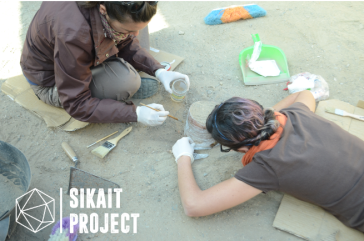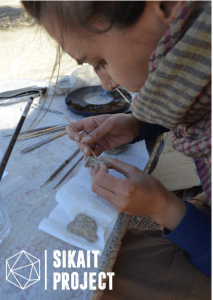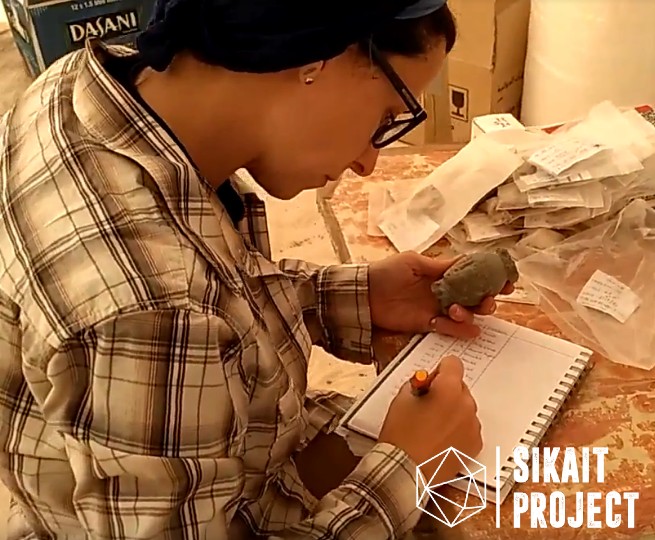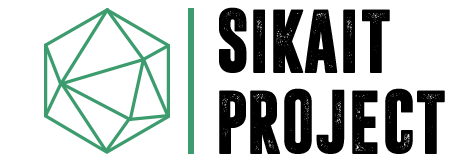All the conservation-preservation work plays a key role in the archaeological interventions performed as part of the Sikait Project. Therefore, the team has a group of professional conservators specialized in archaeology.
The weather conditions of the desert and the relative alkalinity of the ground make this settlement the perfect location for the preservation of any kind of material: ceramic, iron, bronze, tissue, wood, etcetera. Nonetheless, these objects do suffer some forms of degradation or alteration. Even though it is not extremely severe, it is something that must be taken into account during their treatments.

A very important aspect of the work done by the restorers in Sikait is based on obtaining as much information as possible from these archaeological pieces. Thus, the specialists of each field can run the pertinent research. Therefore, the interventions are focused on the preparation of these materials so that the team can study and photograph them. The cleaning ─an irreversible but necessary type of treatment─ must be controlled, minimal and also effective. Moreover, the stability of the materials must be ensured at all times; the great impact the weather conditions of the desert have on these objects could accelerate their degradation process. That is why the use of consolidating, inhibiting and stabilizing products is very common.

Lastly, it should be mentioned that these objects, once excavated, must be transferred to a warehouse located several kilometres away from the settlement. Therefore, the restorers must also make packaging that is strong enough to guarantee their safe transport, thus minimizing the impact of bumps and vibration. Furthermore, the material of the packaging must be as stable and inert as possible to avoid any severe deterioration while the objects are stored.

When it comes to the restoration performed in settlements such as Sikait, which is located in the middle of the desert, it must be taken into consideration that it is very different from the common image of a restorer dressed in white, standing in a laboratory and surrounded by luxuries such as running water and electricity. In Sikait, the laboratory is outdoors, and we have a table with two stools, nothing but the sunlight, and tools that are used for other everyday purposes. Every day entails a professional challenge, mixed with our capacity to adjust to the environment, quick decision-making skills and, above all, a lot of resourcefulness.







